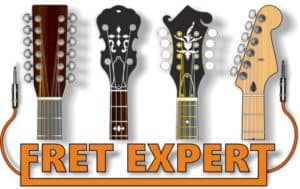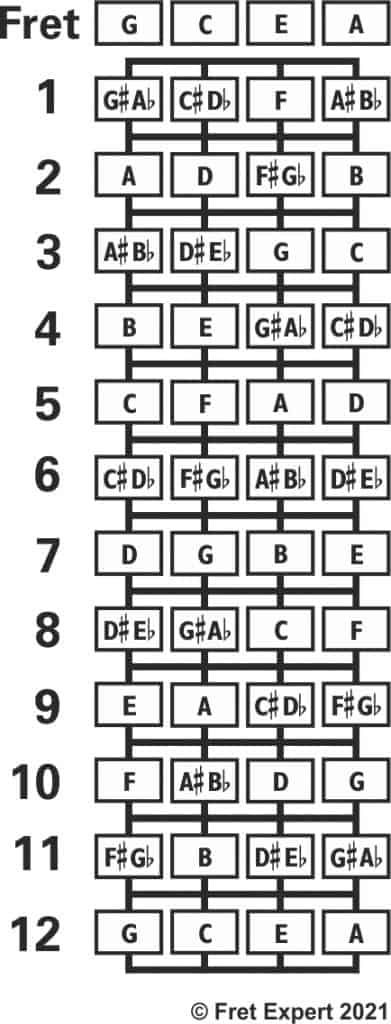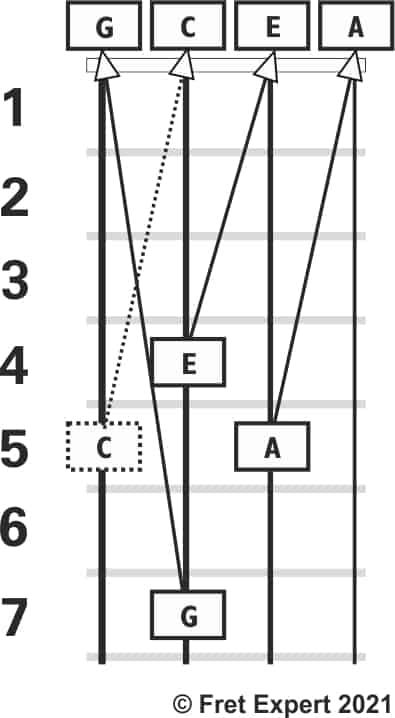The following blog is largely concerned with the concert ukulele and the most suitable tunings for its scale length.
I’ll also be covering my observations on, albeit briefly, regarding other members of the ukulele family in comparison with the concert model.
Covered in this Article:
Standard Concert Ukulele Tuning Guide
Much like the soprano and tenor ukuleles, standard tuning on the concert uke has remained at G-C-E-A (4th to 1st strings) for a number of years.
In chordal parlance, it’s an open C6 chord, also referred to as ‘C Tuning’.
Here’s a diagram showing the complete string and fretboard layout of a concert ukulele up to the twelfth fret. You see the note pattern starts to repeat when you reach the twelfth fret:
Below is a concert ukulele diagram illustrating where to fret on the fretboard to tune the uke to itself.
The split box section demonstrates where to fret to tune the re-entrant ‘G’ string. If you are using re-entrant tuning, always tune your lowest-sounding string first (the ‘C’ or 3rd string):
Can You Tune a Concert Ukulele DGBE?
The problem with trying to tune a concert uke to what is a designated tuning for the much bigger baritone ukulele, has to do with the scale length of the instrument.
The scale length is the measurement from the nut (the white or cream colored slotted bar which resides between the headstock and the top of the fretboard) and the bridge/saddle arrangement. As a rough rule of thumb, the longer the scale, the longer and deeper sounding your strings have to be.
This is a slightly simplistic analysis, but generally, this is the case with most instruments, apart from octave strings on instruments such as 12-string guitars and Irish bouzoukis.
At a pinch you might be able to tune your concert uke up an octave to high DGBE, but the standard lower tuning is very unlikely to be achievable or your strings will almost certainly be too loose to retain any decent timbre or tuning stability. A loose string will never resonate as successfully as one which has the correct tension applied to it.

Going the other way, if you try to tune your instrument beyond the maximum stretching point of the strings, you’ll very likely be ordering a replacement after it breaks. That’s why every string is given a specific gauge for a set tuning.
There’s always some leeway either way, but as a general rule, it’s wise to stick to the string manufacturer’s recommendations.
The much smaller members of the ukulele family, the sopranino and sopranissimo are suitable candidates for the high octave version of DGBE, but standard tunings are there for a purpose and not just based on some arbitrary tuning configuration.
Can You Tune a Concert Ukulele Like a Baritone?
This is a more direct question in comparison to the above query, but essentially my answer will be the same. No, you can’t tune a concert ukulele like a bariton, if you want to achieve low DGBE. I’d even query high DGBE which is more suitable on the smaller soprano uke and above.
My only suggestion, if you really want to pursue this particular tuning is to purchase a set of charango strings, such as the Nylgut strings made by Italian manufacturers, Aquila (you can usually get them at Amazon).
Charangos have the additional high ‘E’ string on their first and second unison pairings, so you could utilize one of the strings for the high E for the first string.
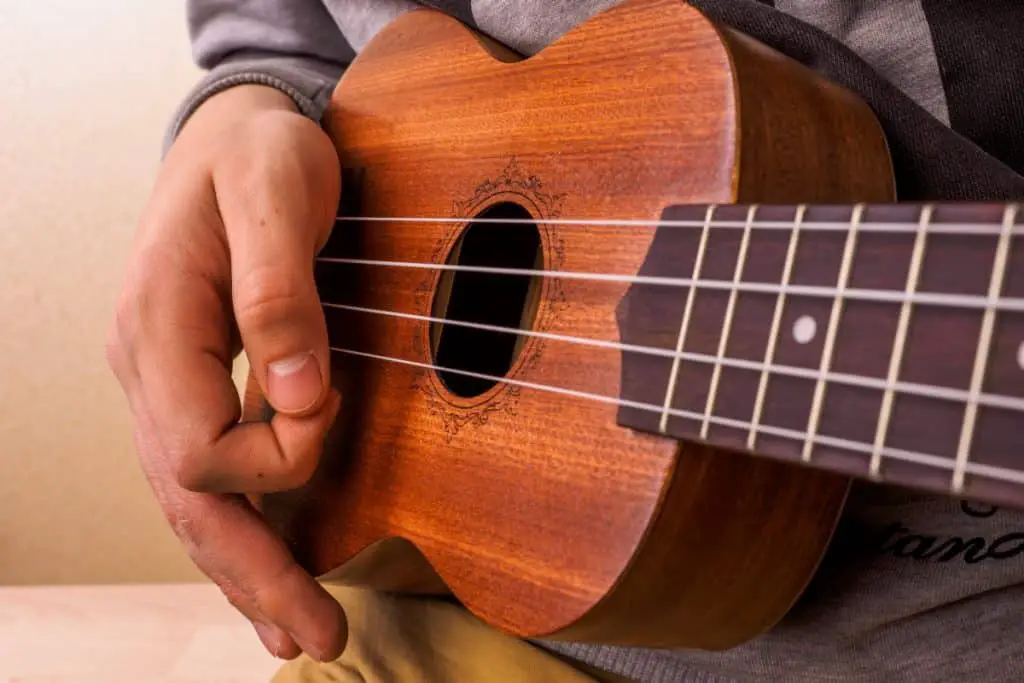
Having never felt the need to deviate from standard C or alternative D tunings, in the main, for the smaller members of the ukulele family (other than the sopranino and sopranissimo), I’m not going to pin my colors to the mast and claim DGBE is possible, or for that matter, desirable.
Still, you won’t lose very much by giving it a go. But be prepared for the odd string breakage, if it doesn’t work out.
Soprano vs Concert Ukulele Tuning Differences
In contrast to the above questions, the tuning of your soprano and concert ukes is very much down to personal preference.
Modern day standard tuning, for most purposes, is going to be GCEA (C6 or ‘C’ Tuning). It’s what most beginners are taught and the tuning featured in the vast majority of ukulele songbooks and instructional guides. That’s not to say you have to rigidly remain in GCEA forever.
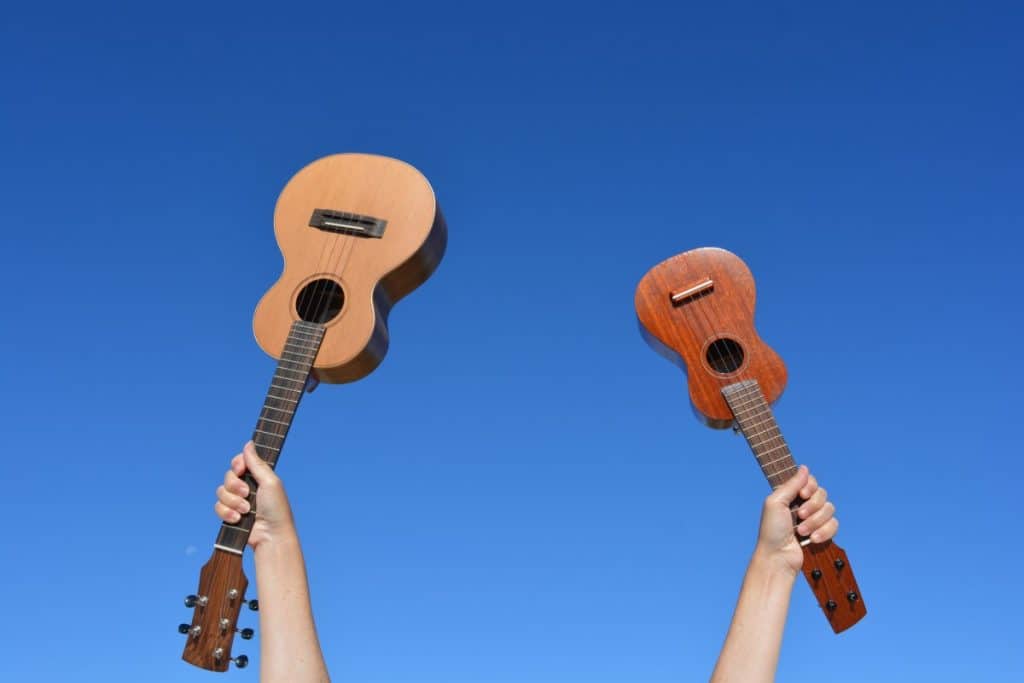
An equally viable option and one dating back to the twenties and thirties from the last century, is pitched a whole tone up (or two semitones, whichever way you look at it!). ADF#B gives you open D6 or ‘D’ tuning and is favored by some ukulele players who want a slightly lighter and more percussive tone on their ukes.
It’s also ideal for reproducing music from the jazz age. If you look at the sheet music from that particular period, you’ll discover everything is transcribed for ADF#B and not the modern standard of GCEA.
Pro Tip: If you want to achieve ADF#B, but without having to retune your ukulele, the simplest solution is to capo your instrument at the second fret. See my separate article on using a ukulele capo!
In practical terms, it’s quite possible to tune most of your ukuleles to either configuration, including the soprano, concert and tenor.
I even have one of my sopraninos tuned to GCEA without it suffering in any significant way regarding tuning instability or flatness of tone, although GCEA is arguably a bridge too far for the tiny sopranissimo. It will accept ADF#B, though.
Concert Ukulele Chord Examples
The green dots indicate the complexity of the chord. The examples given below range from ‘easy’ (1 dot) through to ‘Intermediate Level’ (3 dots).
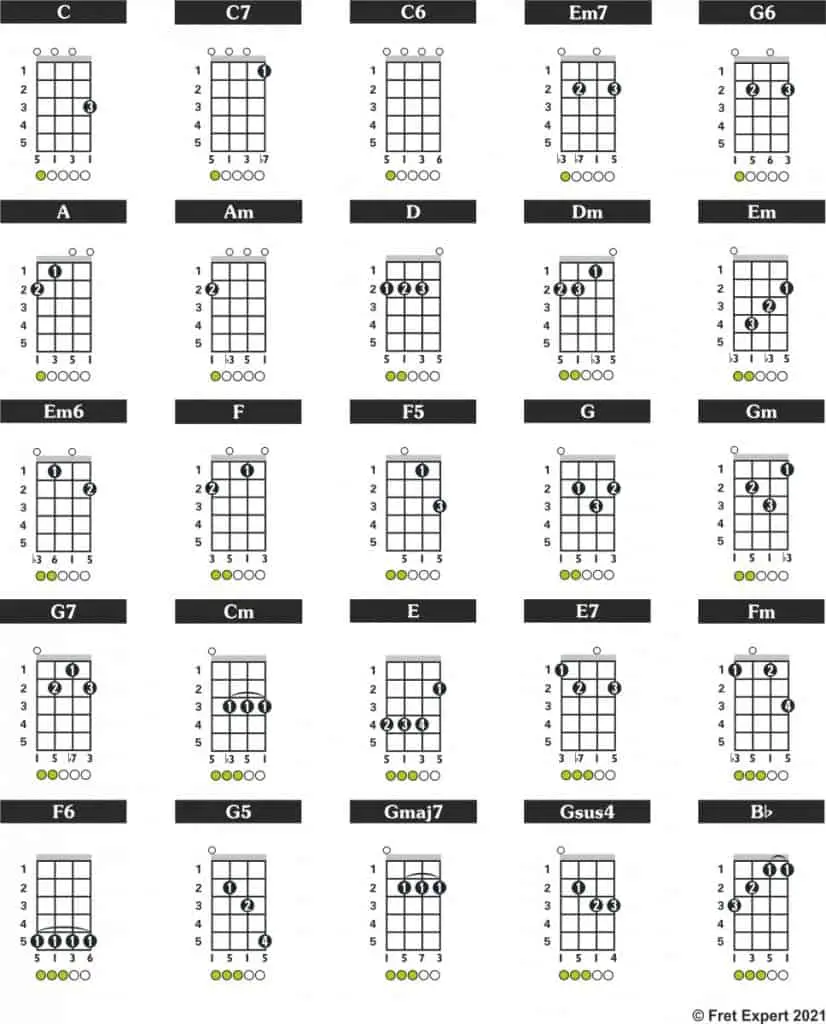
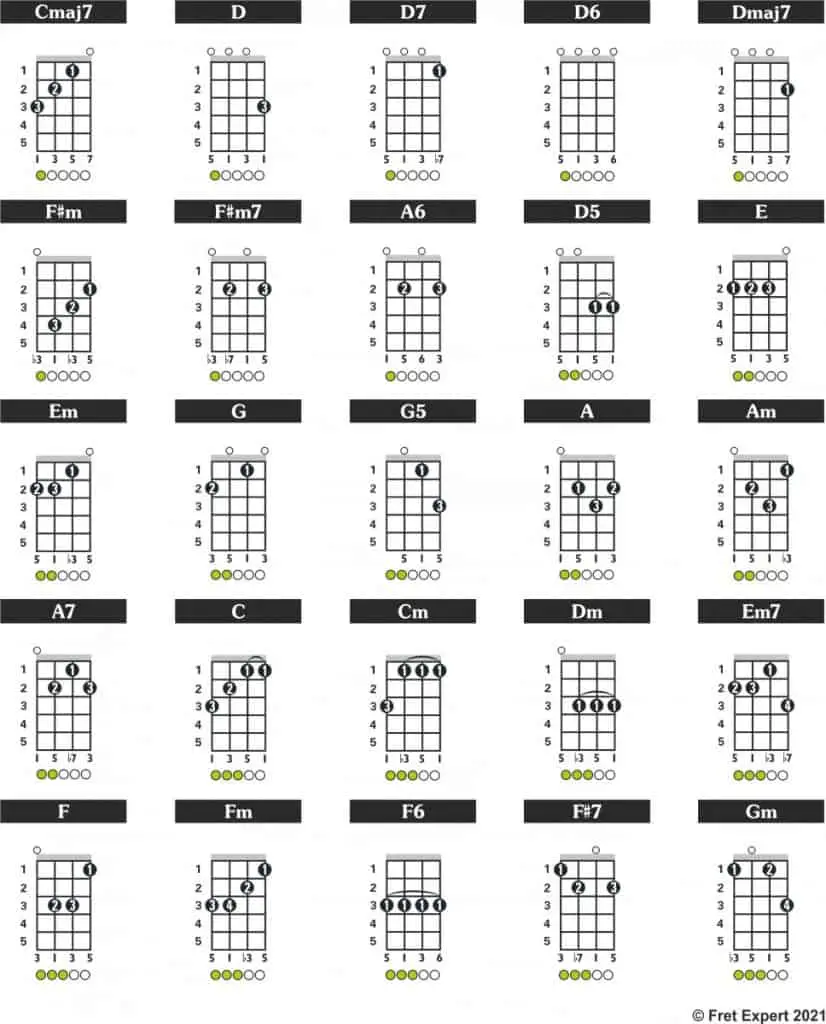
More complete chordal diagrams are featured in my three Ukulele Chord Bibles ‘C’, ‘D’ and ‘Baritone G’ tunings, if you would like to delve deeper into the fascinating world of ukulele chords!
In another blog on ukulele chords I will also be looking into some of the more specialised tunings, favored by well known players from within the ukulele world.
Although, these couldn’t be described as mainstream in any sense of the word, they do offer an interesting insight into an alternative method of tuning your uke, using new and different tonal colors.
I hope this gives you an explanation of the best tuning for your concert uke, and perhaps some of the little-dicussed reasons why you should (or shouldn’t) select a specific type of tuning.
